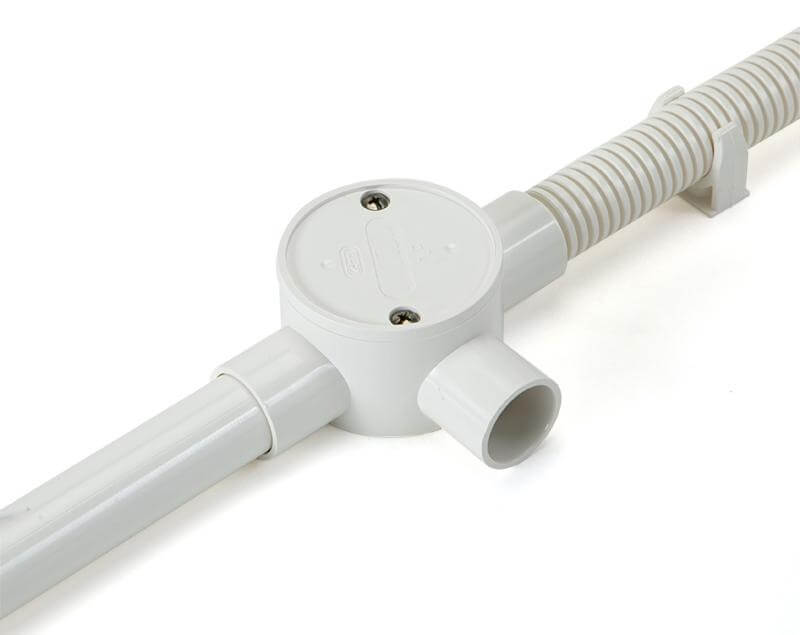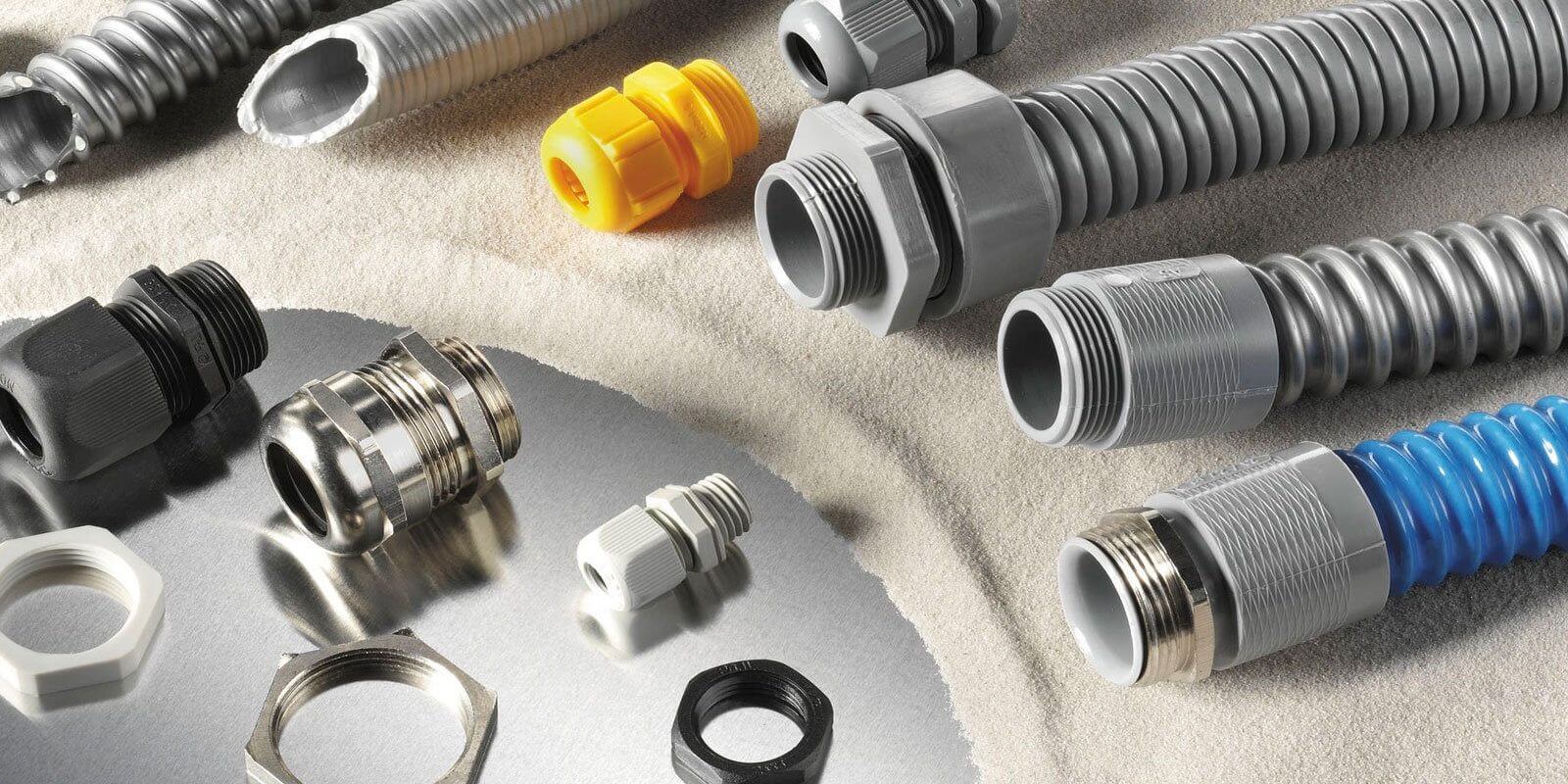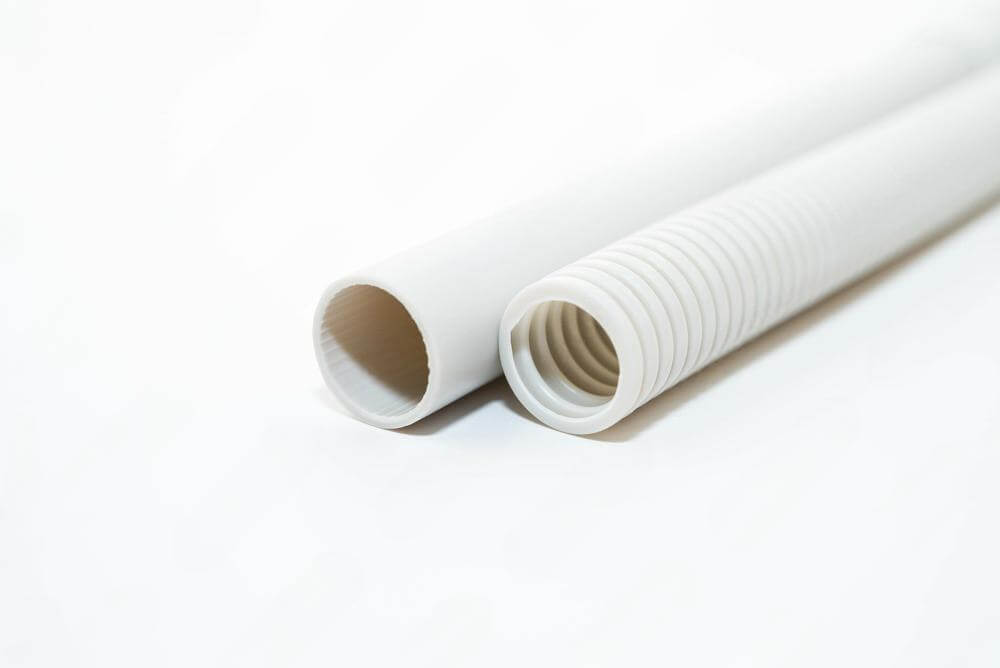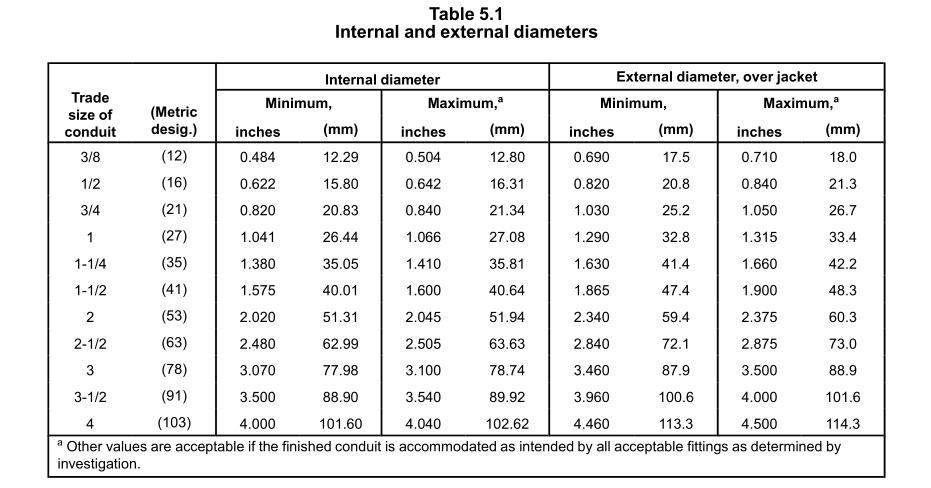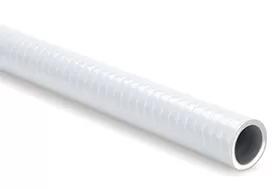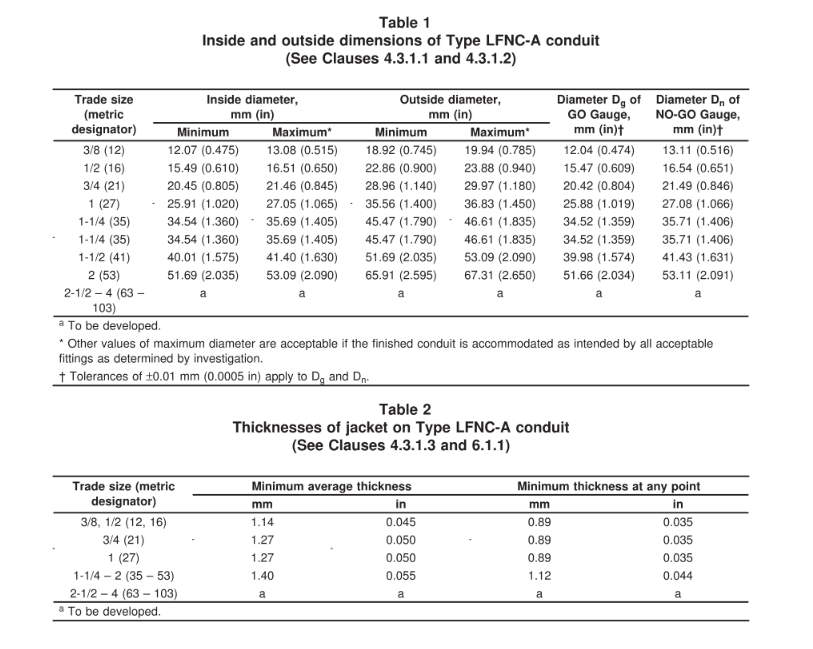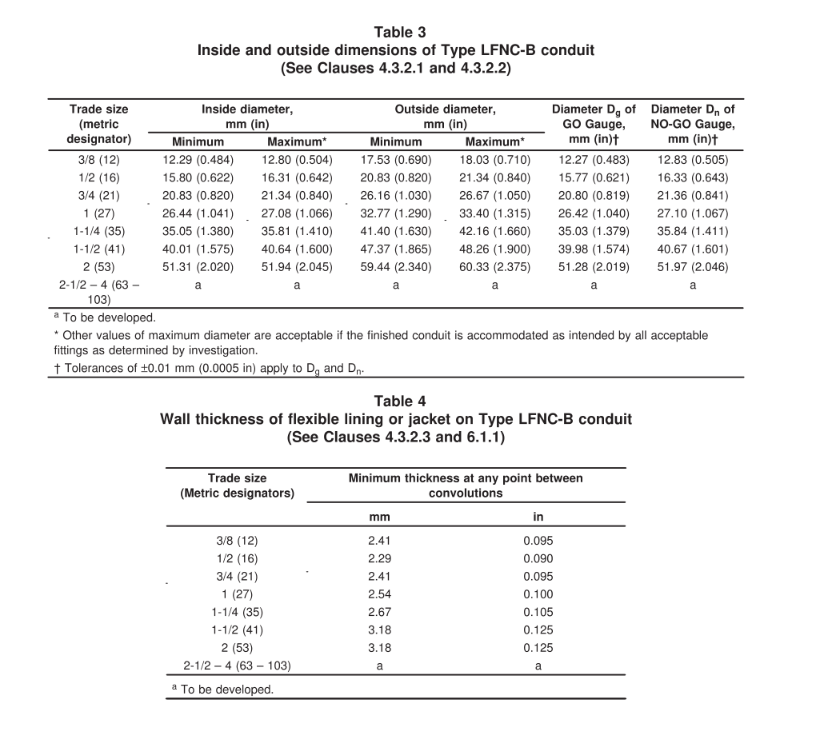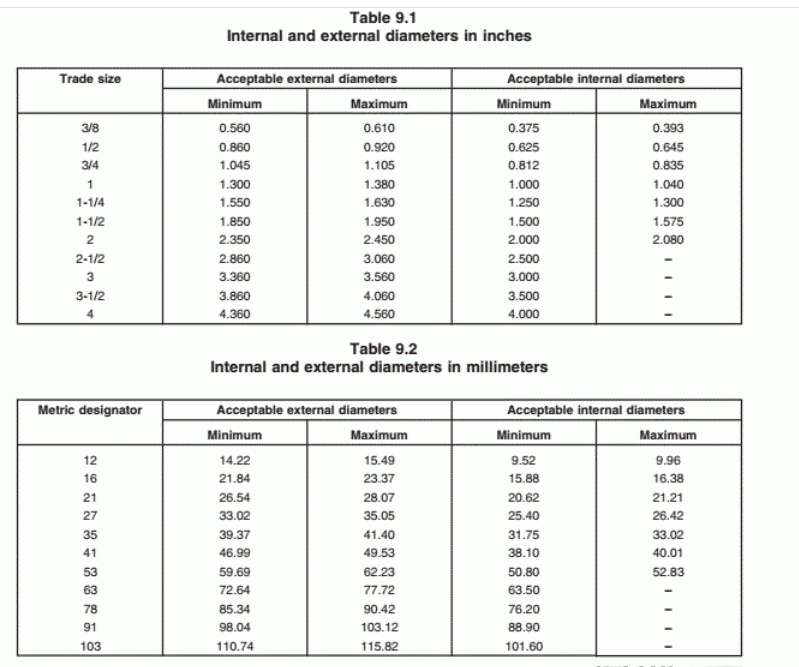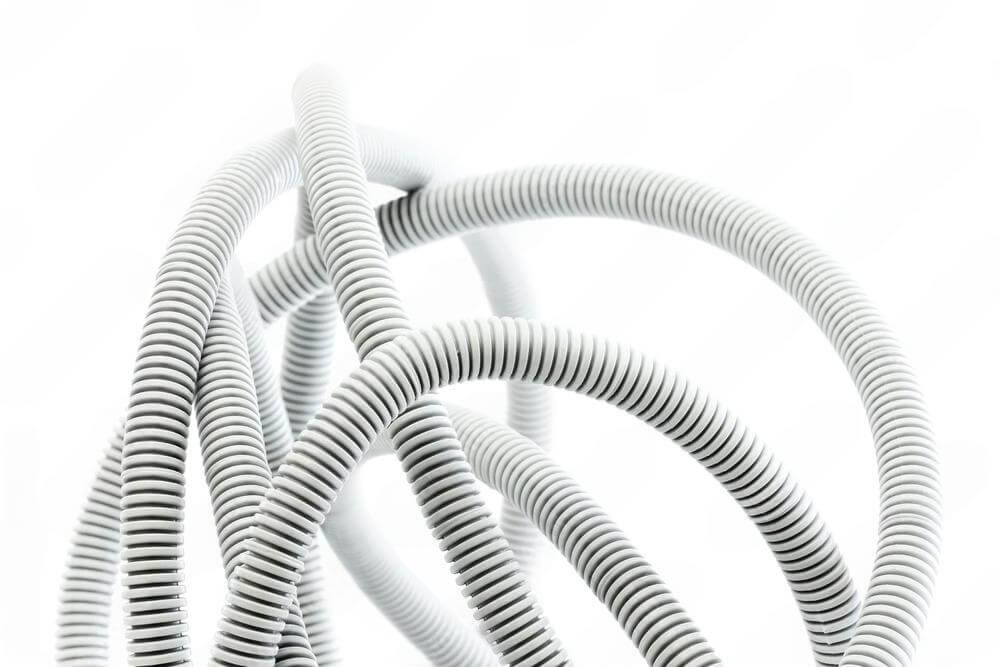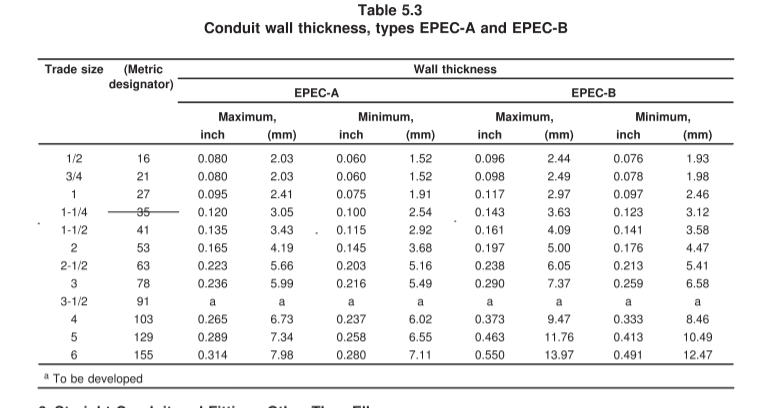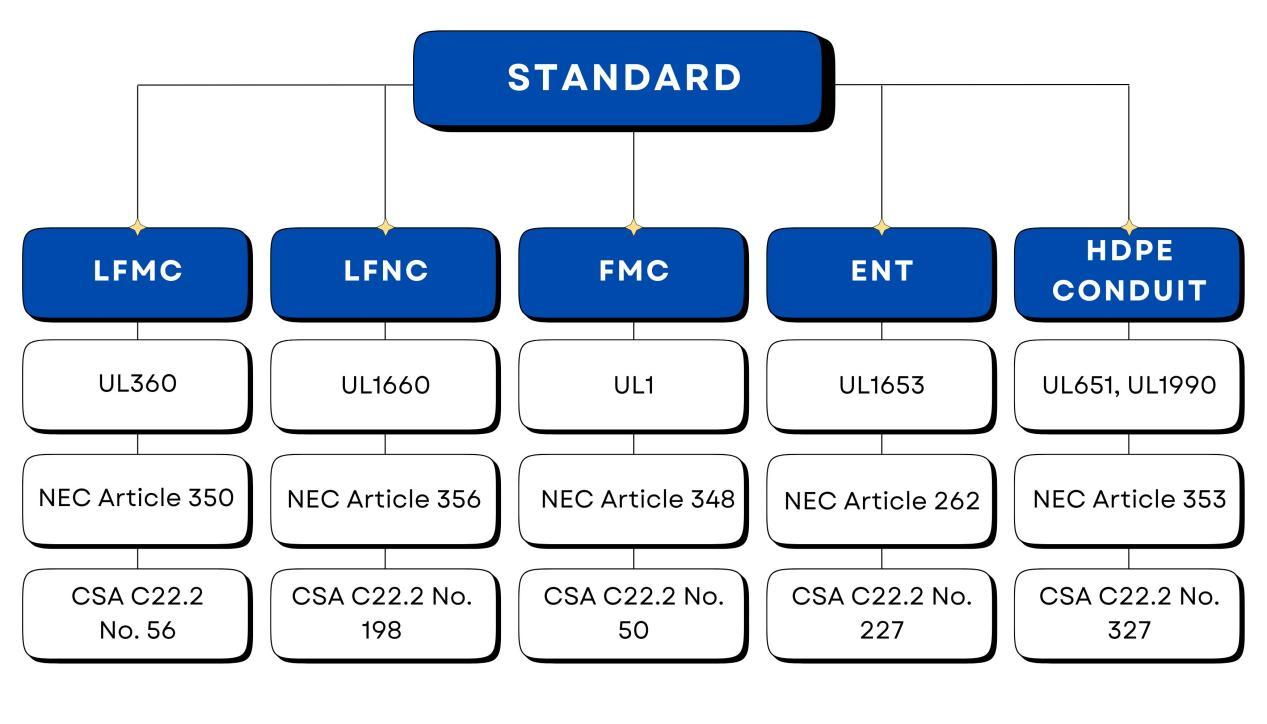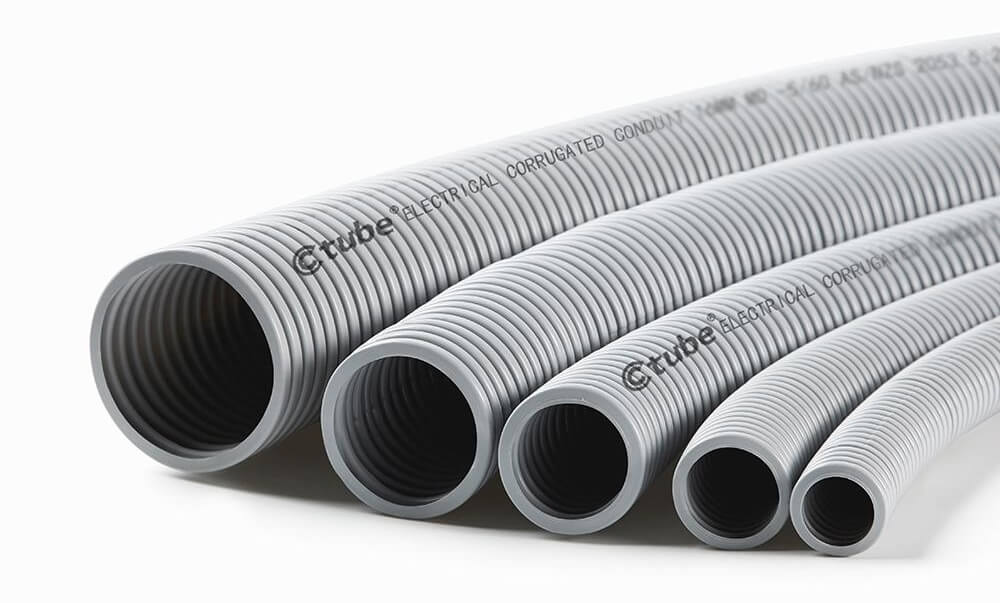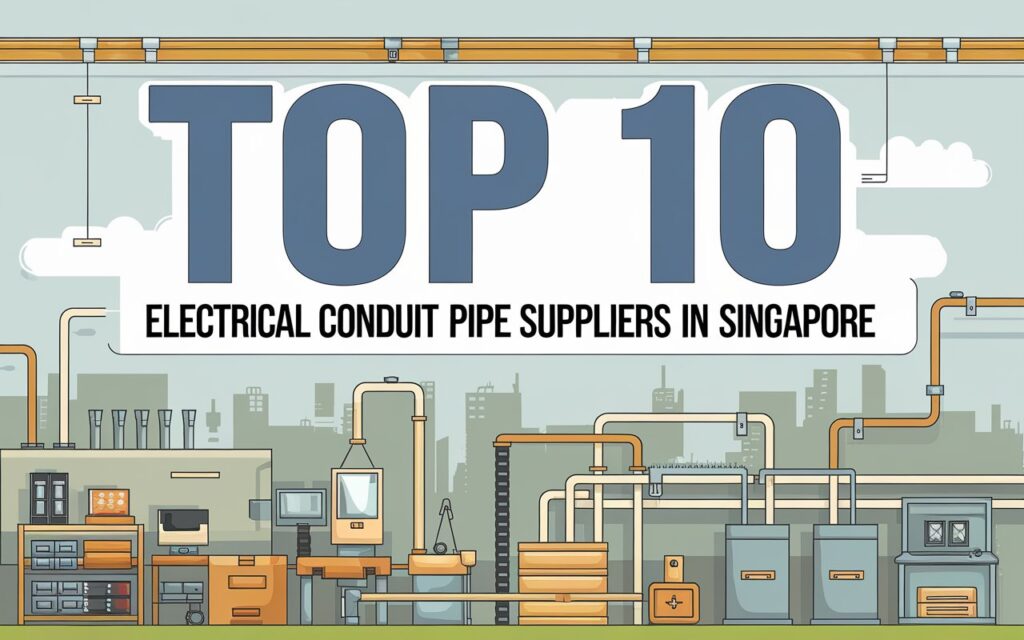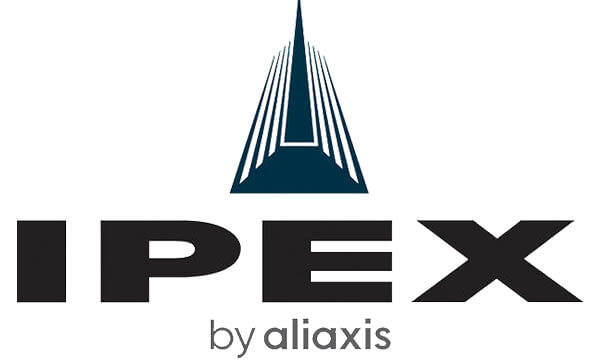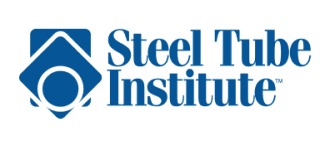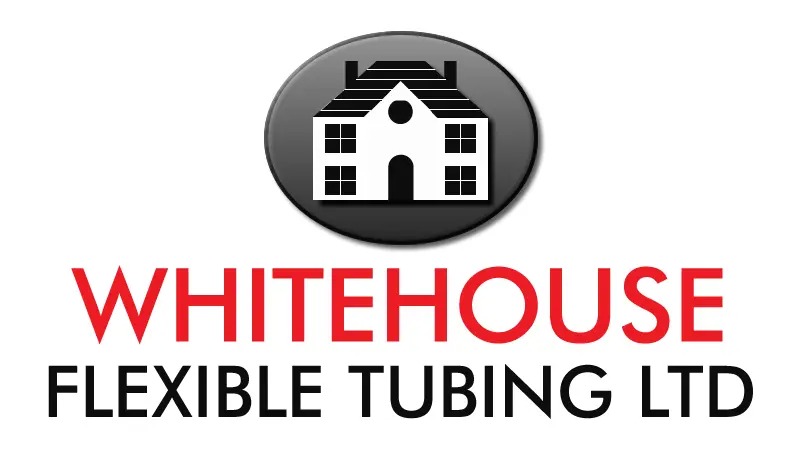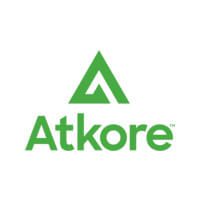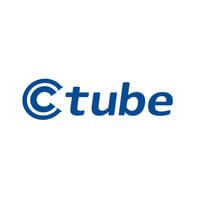如何将软导管连接到电箱:分步指南
1.导言
柔性导管是现代电气系统中不可或缺的多功能部件,可为各种应用中的电线提供保护和灵活性。与刚性导管不同的是,柔性导管可以弯曲并适应具有挑战性的布局,因此非常适合狭小角落、不规则形状或频繁调整的空间。无论是在住宅地下室、商业办公室还是工业设施中,软导管在保护电线免受机械损伤、环境危害和磨损方面都发挥着至关重要的作用。它通常由塑料、金属或两者结合的材料制成,确保了在不同环境下的耐用性和适应性。
将柔性导管正确连接到电箱不仅是一个方便的问题,也是确保整个电气系统的安全和效率的基本步骤。牢固的连接可防止电线暴露在潮湿、机械应力或意外脱落等有害环境中。此外,坚持正确的安装做法有助于保持符合国家电气规范(NEC)等电气法规,这是安全和合法安装的强制性要求。不符合这些标准可能导致昂贵的维修费用、罚款甚至安全隐患。
本指南将介绍在软导管和电箱之间建立安全、符合规范的连接所需的知识和技术。
2.所需工具和材料
要将柔性导管正确连接到电箱上,就必须充分了解所需工具和材料。每个元件都有特定用途,可确保安装安全、符合电气规范,并能承受环境或操作压力。
2.1 软导管的类型
柔性导管是这一连接过程的支柱,为电线提供保护外壳。以下是一些常用的软导管。选择正确的导管类型对于匹配安装环境至关重要。
液密软管 (LFMC):LFMC 具有耐用的金属芯,外层包裹着防潮的 PVC 护套。它专为室外或潮湿环境而设计,例如暖通空调系统、室外照明或暴露在飞溅水滴和雨水中的区域。其防水设计可防止湿气进入电线,确保安全和使用寿命。
金属软管 (FMC):FMC 通常被称为 "绿地 "导管,由相互锁定的金属带组成,为室内环境提供了一种坚固而灵活的解决方案。它非常适合机械保护优先的工业和商业应用,如设备间或工厂。FMC 还可与金属盒配套使用,实现接地。
非金属柔性导管 (NMFC)):NMFC 重量轻、耐腐蚀,是一种塑料导管,通常由聚氯乙烯或聚乙烯制成。它非常适合住宅安装,易于操作和切割。虽然成本效益高,但 NMFC 最适合干燥的室内空间,在暴露的环境中可能需要额外的保护。广泛使用的是聚氯乙烯波纹导管,因此称为电气非金属管(ENT)。
2.2 电箱类型
电气箱是一个接线点,用于容纳导线连接,并保护其不受外部损坏。选择的电箱类型必须与导管类型和安装环境相匹配。
接线盒:这些大型多用途接线盒用于连接多条电线,是复杂布线系统的理想选择。接线盒通常安装在墙壁、天花板或阁楼上,可与各种柔性导管兼容。
插座箱:插座盒比接线盒小,设计用于安装插座、开关或灯具。插座盒常用于住宅和商业建筑,可用于柔性导管连接。
防风雨箱:这些盒子专为室外或潮湿环境设计,密封性好,可防止进水。它们与液密柔性导管完美搭配,可用于室外照明、泳池系统或工业冲洗区域。
2.2.3 金属箱与塑料箱
金属箱:金属盒耐用、耐热、导电,常用于商业和工业环境。与金属导管一起使用时,可提供自然接地路径。
塑料箱:塑料盒重量轻、不导电,是住宅用途的经济实惠之选。如果与金属导管一起使用,则需要单独接地。
2.2.4 箱体尺寸
一定要考虑箱体大小,确保它能舒适地容纳电线和连接器的数量。过度拥挤会导致过热和不安全状况。
2.3 导管连接器
导管连接器是将柔性导管连接到电箱上不可或缺的工具。它们可以固定导管,确保对齐,并为电线提供一个安全的外壳。
直式连接器:这是最基本的类型,其设计目的是让导线管以直线路径进入线盒。它们非常适合不需要改变方向的安装。
90 度连接器:用于急转弯,不会对导管或导线造成压力。在狭小空间或需要在靠近线盒的地方改变方向的安装中,这些设备是必不可少的。
应力消除连接器:这些连接器的设计目的是固定导管,同时最大限度地减少对封闭导线的应力。在受振动或经常移动的地方特别有用。
公型和母型连接器:用于连接不同的导管部分或从导管过渡到盒子。公接头通常与母接头拧在一起,以确保安全配合。
液密连接器:这些连接器专门用于液密柔性导管,具有橡胶垫圈或密封圈,可防止水渗入。
2.4 硬件和工具
可靠的连接需要的不仅仅是导管和连接器。正确的硬件可确保稳定性和使用寿命:
螺丝 用于将连接器固定在箱体上。室外或潮湿环境应选用不锈钢等耐腐蚀螺丝。
螺母和垫圈 提供额外的安全性,特别是在金属箱中,严密的密封对接地和稳定性至关重要。
锁紧螺母和衬套: 锁紧螺母可将连接器牢牢固定到位,而衬套则可防止电线与尖锐边缘发生摩擦。
适当的工具可使安装过程顺利高效。确保所有工具都是高质量的,并适合所使用的材料:
剪线钳/剥线钳 这些工具是准备电线的必备工具,可确保切割干净并正确去除绝缘层,同时不损坏线芯。
螺丝刀 一套螺丝刀(平头螺丝刀、十字螺丝刀或梅花螺丝刀)是固定连接器和箱体部件所必需的。在带电导线附近工作时,应选择绝缘手柄,以增加安全性。
管道弯曲器: 虽然柔性导管具有天然的可弯曲性,但可能需要导管弯管机来实现精确的角度,特别是在金属导管应用中。
卷尺 精确的测量可确保导管长度合适,并减少材料浪费。切割前一定要仔细检查测量结果。
多功能刀 用于修剪非金属导管上多余的材料或清理粗糙的边缘。
钻头和孔锯: 对于需要在箱体或面板上开新孔的安装,这些工具可提供干净、精确的切割。
水平仪和标记: 水平仪可确保安装笔直、专业,而标记牌则有助于规划导管路径和安装点。
3.准备导管和电箱
适当的准备工作对于确保电气安装安全、耐用和合规至关重要。
3.1 测量导管
精确测量: 首先要测量从一个电箱到另一个电箱,或从电箱到插座、开关或接线口所需导管的确切长度。为了准确起见,一定要使用卷尺,并确保沿着导管运行的路径进行测量,包括任何弯曲或转弯处。
考虑路径: 柔性导管可以弯曲并绕过障碍物,但急转弯会损坏导管或使其难以铺设。一定要为渐进弯曲做好计划。如果要在拐角处或沿着墙壁布线,请测量总距离,并多加几英寸以便调整。
运动账户: 柔性导管通常用于可能发生轻微移动的地方(如墙壁或天花板),因此在测量时要留出一定的松弛空间,以适应这种灵活性。
允许弯曲: 如果打算弯曲导管,则需要考虑弯曲半径并增加一些长度。过紧的弯曲会使导管和里面的电缆受力,从而导致潜在的损坏。
弯曲半径 柔性导管通常有一个最小弯曲半径,这是在不造成损坏的情况下可以安全弯曲的最窄曲线。如果您不确定,一般的指导原则是保持弯曲半径至少为导管直径的三倍。例如,对于 1 英寸导管,最小弯曲半径约为 3 英寸。
3.2 正确的切割技术
要实现干净利落的切割,必须使用正确的切割工具。对于像 ENT 这样的柔性导管,导管切割器(手动或电动)是理想之选,因为它们能进行干净、精确的切割,而不会使导管变形。另外,也可以使用钢锯,但需要确保锯片是细齿的,以防磨损边缘。
固定导管: 切割时,一定要固定好导管,以免导管移动导致切割不平整。在切割时,使用夹子、钳子甚至是搭档将导管固定到位。这一步骤可确保切割更安全、更精确。
切直: 平直、均匀的切割可确保导管正确安装到电箱或连接器中,不会出现任何缝隙或错位。切割时,要保持锯或切割器水平,并始终垂直于导管的长度进行切割。
使用指南: 如果您使用的是锯子,斜切箱或切割夹具可以帮助引导锯子,确保切割平直方正。
专业提示 切割后,用锉刀或去毛刺工具磨平导管切割端周围的尖锐边缘或毛刺。这一步对防止导管损坏电线或安装时不合适至关重要。
3.3 准备电箱
检查包装盒: 电气箱在设计时为各种导管尺寸预留了孔洞。首先检查电箱是否有适合您的导管尺寸的开孔。这些开孔位于电箱的侧面或背面,可以轻松拆卸,为导管开孔。
选择合适的插孔尺寸: 确保您选择的插孔与导管的直径相匹配。如果安装孔过大或过小,导管将无法正确安装,从而可能导致安全问题。
清理杂物: 在进行任何连接之前,请彻底检查和清洁电箱。电箱可能会积聚灰尘、污垢、旧电线绝缘层和其他碎片,这些可能会妨碍正常连接。用干布擦拭电箱,检查是否有旧电线或金属碎片,以免在安装过程中造成危险。
检查是否有障碍物: 确保箱内没有障碍物,以免干扰导线管接头或使其无法正确靠在箱壁上。任何障碍物都可能在试图固定导管时造成问题,导致不安全的连接。
最后检查: 在开始安装导管和进行连接之前,请花点时间仔细检查所有准备工作。确保导管的长度准确无误,护套已正确剥离,电箱干净整洁,可随时连接。安装前的最后检查有助于确保一切顺利,减少出错或需要重做的风险。
4.连接软导管的分步指南
将柔性导管连接到电箱是一个需要仔细关注细节的过程。牢固的连接可确保电气系统的安全性和功能性,保护内部电线,防止磨损或意外断开。以下是如何将软导管连接到电线盒的全面分步指南,可确保安装的成功和安全。
步骤 1:定位导管和箱体
首先将电箱和软导管放置在需要连接的位置。确保电箱和导管的位置相对稳固,以尽量减少对接线和连接器的压力。
将导管与箱体对齐: 在进行任何实际连接之前,请花点时间确保导管与电箱的插孔正确对齐。这将有助于避免不必要的弯曲或扭曲,以免对导管和内部线路造成压力。
为弯曲预留空间(如有必要): 如果需要弯曲软导管进行连接,应预留适当的空间。软导管很容易用手弯曲,但重要的是不要过度弯曲,否则会损坏里面的电线。
步骤 2:安装导管连接器
导管连接器是将软导管与电气箱物理连接的部件。选择与导管尺寸相匹配的连接器,并与电气箱上的开孔相匹配。导管连接器有多种类型,如直式、90 度、应力消除和公/母连接器,具体取决于安装要求。
将导管插入连接器: 将软导管的末端滑入连接器,确保里面的导线不会受损。大多数连接器都有一个扣眼或压缩密封圈,以保护导线和防止磨损。
确保合适: 导管应紧贴连接器内部。如果连接器有螺纹端(如压缩型连接器),应确保螺纹正确啮合,以确保连接牢固。
应力消除(如需要): 在安装导管时,如果导管可能会受到物理应力或需要额外的支撑,则应使用应力消除连接器。这种连接器可以防止导管在拉力作用下被拉出盒外。
步骤 3:将连接器固定到电箱上
将导管插入连接器后,就该将连接器固定在电箱上了。这一步至关重要,可以确保导管连接牢固,不会随着时间的推移而松动,从而导致安全隐患。
拧紧连接器: 用螺丝刀拧紧固定连接器的螺丝或螺栓。确保连接器与接线盒齐平,接线盒和导管之间没有缝隙。这将确保连接牢固、稳定。
必要时使用锁紧螺母: 有些连接器,尤其是与金属导管一起使用的连接器,可能需要锁紧螺母来固定。锁紧螺母位于盒子内侧,拧紧后可将连接器固定到位。务必牢牢拧紧防松螺母,但要避免拧得过紧,否则会损坏盒子或连接器的螺纹。
确保安全密封: 如果使用液密连接器,请检查它是否有橡胶密封圈,以防止湿气进入盒内。这一点在室外或潮湿环境中尤为重要。
步骤 4:拧紧导管
将连接器牢牢固定在箱体上后,拧紧软导管本身,确保其牢牢固定在连接器中。这一步骤对于确保导管的完整性和保护导线不外露或被拉断至关重要。t.
将导管推入连接器: 对于某些类型的连接器,您需要将软导管进一步推入连接器,直到完全就位。如果连接器有压缩或锁定装置,则应将其拧紧,以牢牢固定导管。
检查移动: 拧紧导管后,轻轻拽一下,确保连接牢固。导管和箱体之间不应有任何移动。如果有移动,请重新检查连接,并确保所有螺丝、螺栓或锁定装置都已正确拧紧。
步骤 5:将导线固定在导管内
现在导管已经牢固地连接到盒子上,下一步就是确保导管内的电线得到妥善固定。这对于防止电线松脱或造成安全隐患非常重要。
检查导线长度: 确保导管内的导线足够长,能够到达预定的端子或连接器,而不会被拉紧。如有必要,应修剪多余的导线,以避免缠结或过度松弛。
剥线和接线 如果您还没有这样做,请根据需要剥开电线,并将其连接到电气箱内的相应端子上。确保电线连接紧密牢固,没有裸露的电线。
固定电线: 如果配电箱有用于固定电线的线夹或夹线套,请使用它们将电线固定到位。这样可以防止电线在导管内移动,并保护电线不受损害。
步骤 6:最后检查
一切连接完毕后,必须进行最后检查,以确保安装既安全又符合电气规范。
检查松紧度是否合适: 仔细检查所有连接,包括导管连接器、导管和电气箱螺丝是否牢牢拧紧。松动的连接会导致电气短路、电阻增大甚至火灾危险。
验证接地连接: 确保任何接地导线或部件都正确连接到电气箱的接地端子上。
检查是否有裸露的电线: 确保没有电线裸露在电箱或连接器之外。裸露的电线会造成触电危险,因此应妥善固定并绝缘。
步骤 7:测试连接
连接完成并拧紧所有部件后,重要的是在最后确定一切之前对安装进行测试。
打开系统电源: 在安全的情况下,接通电气系统电源以确保连接正常。检查线路是否存在问题,如短路、过热或断路器跳闸。
寻找问题: 检查导管和电箱周围是否有过热、火花或异常噪音的迹象。这些迹象可能表明连接有问题,需要在继续之前解决。
5.合规和安全标准
在进行电气导管安装时,确保符合安全标准和规范对于安装安全和财产保护都至关重要。有几项标准和认证可以指导专业人员选择和安装正确的材料,并确保整个系统有效、安全地运行。这些标准包括 国家电气规范 (NEC)、UL 和 CSA 认证并遵守当地的建筑规范。
5.1 NEC 规范要求:导管安装的主要标准
国家电气规范》(NEC)是美国电气线路和设备安全安装的主要标准。在导管安装方面,NEC 提供了明确的指导原则,帮助专业人员避免危险错误,确保系统持久安全。NEC 涵盖的内容包括使用的导管类型、尺寸和安装方法。
下面,我们就读者对接线盒安装的要求做一些参考。
5.1.1 NC 314.28:接线盒材料指南
本节规定了制造接线盒所用材料的标准。
接线盒的材料必须与安装环境和条件相适应。这包括耐火性、耐久性和防止机械撞击。
接线盒常用的材料包括金属(钢、铝)或非金属材料(PVC、玻璃纤维),具体取决于暴露于湿气或化学品等环境条件。
如果在沿海地区等盐水会造成腐蚀的环境中使用,箱体还必须符合特定的防腐蚀标准。
如果接线盒用于危险场所(易爆或易燃环境),其材料必须符合特定的危险场所要求(参见 NEC 370-29)。
箱体材料必须能够承受预期的温度范围和环境应力。
5.1.2 NEC 314.16:接线盒的体积大小
本节就接线盒的适当容积(尺寸)提供指导,以确保安全运行并防止过热。
箱体填充计算:接线盒的尺寸必须足够大,以容纳所有导线、设备和配件,而不会过于拥挤。
填充计算涉及导体尺寸、导体数量、设备(如开关或插座)、夹具和接地导体。
箱容量:所需体积取决于几个因素。
用于指挥 每根导线(带电导线、中性线导线或接地线导线)根据其规格都有特定的立方英寸数。
用于设备: 开关、插座和类似设备需要在箱内留出一定的空间。
夹具和连接器: 这些组件也会增加填充计算量。
方框填充公式:NEC 提供了一个表格(NEC 表 314.16(B)),为每个项目分配了立方英寸值。总填充量不得超过箱体的额定容积,以避免过热、电气故障或难以正确连接。
5.1.3 NC 370-29:用于危险场所的接线盒
本节概述了对危险场所接线盒的要求,在这些场所,由于易燃气体、蒸汽或粉尘,存在爆炸或起火的危险。
防爆箱和防尘箱:在危险场所使用的接线盒必须具有防爆(I 类 1 分区或 2 分区)或防尘燃(II 类 1 分区或 2 分区)等级。这些接线盒必须能防止电气设备的火花、电弧或热量引燃。
密封和垫圈:箱子必须有密封条和垫圈,以防止易燃材料、灰尘或液体进入。
封面设计:盖子必须严密密封,能够承受高压释放,不允许有害物质泄漏。
材料考虑因素:箱体材料的设计必须能防止在有害化学品、气体或极端温度环境下发生腐蚀和降解。
5.1.4 NEC 314.29:用于非危险场所的接线盒
本节适用于爆炸或起火危险极小的非危险场所的接线盒。
一般安全: 箱体应符合一般安全标准,为安全的电气连接提供足够的空间,并防止过热。
防风雨: 在暴露于潮湿、灰尘或污垢的区域(如室外安装),箱体必须具有防风雨功能,并根据环境条件进行评级。例如,户外接线盒必须符合潮湿或潮湿场所的要求(如 NEMA 3R、4 或 4X)。
遵守法规: 非危险接线盒仍必须符合 NEC 的所有其他适用章节,包括与接地(NEC 250.110)、工作空间(NEC 110.26)和盒内填充计算(NEC 314.16)相关的章节。
5.1.5 NEC 250.110:接线盒接地指南
本节确保电气系统正确接地,以防止电击危险和电气火灾。
接地连接: 接线盒必须有正确的接地连接。这包括将接线盒与建筑物或结构的接地系统连接起来的接合跳线或接地线。
金属盒 对于金属接线盒,接线盒本身可用作接地导体。接线盒内必须有接地螺丝或接线端子来连接接地线。
非金属箱: 非金属接线盒需要将外部接地线连接到接地端子或接地螺丝上。接线盒的塑料材料不导电,因此必须有一根独立的接地导线连接到接线盒上。
接地系统的完整性: 必须在整个电气安装过程中维护接地系统,以确保电气系统的安全运行并防止触电。
5.1.6 NEC 110.26:净空准则
本节规定了电气设备(包括接线盒)周围所需的工作空间,以确保安装、维护和应急程序期间的安全。
前部净空: 配电板和接线盒前必须留出最小的工作空间,以便安全操作和维护。通常情况下,根据电压和安培数的不同,这一空间必须至少有 30 英寸宽,并从地面延伸到天花板。
净空深度: 工作空间的最小深度取决于电压(例如,对于 600 伏或更低的电压,空间至少要有 3 英尺深)。更高的电压需要更大的间隙。
净空高度: 为确保安全接近接线盒,接线盒或配电盘的顶部应留有足够的高度余地,通常至少要高出地面 6.5 英尺。
障碍物: 工作空间内不得有可能妨碍接线盒安装或维修的障碍物,所有接入点必须保持畅通。
5.2 UL 和 CSA 认证:认证材料和连接器的重要性
UL(美国保险商实验室)和 CSA(加拿大标准协会)认证在维护电线管安装安全方面发挥着至关重要的作用。这些组织负责测试和认证电气产品和组件,确保它们符合严格的安全标准。
对于电线管、连接器和接线盒等材料,UL 认证可确保产品经过耐火性、耐用性和承受极端条件的能力测试。带有 UL 标签的导管表明它们达到了各种环境所需的安全和性能标准。同样,CSA 认证确认产品符合加拿大的安全标准,确保在加拿大各地的电气系统中安全使用。
使用经过认证的材料和连接器至关重要,因为这可以最大限度地降低因元件缺陷而导致电气故障或火灾的风险。如果产品具有这些认证,安装人员和建筑物业主就可以确信这些材料经过了严格的测试,适合其预期用途。此外,经过认证的组件还能确保符合 NEC 和其他安全标准,从而更容易通过检查并满足法律要求。
6.结论
将柔性导管连接到电箱似乎是一项简单的任务,但它在确保电气系统的安全性、效率和耐用性方面发挥着至关重要的作用。正确的安装可以保护电线免受损坏,降低电气故障的风险,并确保符合行业标准和规定。
Ctube 是一家值得信赖的高质量 软导管 和电气附件,旨在满足各种项目要求。我们的柔性导管按照最高标准制造,并通过了 UL、CSA 和 AS/NZS 2053 认证,确保性能卓越、经久耐用,并符合国际安全和质量标准。
除柔性导管外,我们还提供全面的 电箱 以及相关配件,如杯梳,为各种应用量身定制。这些产品专为住宅、商业和工业项目提供可靠的解决方案,是苛刻环境下的理想选择。
在 Ctube,我们以提供定制解决方案来满足客户的特殊需求而自豪。无论您的项目需要专业的导管类型还是全套的电气附件,我们的团队都随时准备为您提供帮助。我们将创新、质量和优质的客户服务相结合,帮助您高效地实现项目目标。
感谢您的阅读,祝您的项目好运。
常见问题
1.柔性导管可以在室外使用吗?
是的,柔性导管可以在室外使用,但必须为室外应用选择正确的类型。在室外使用软导管时,应确保软导管具有抗紫外线性能,并能适应极端温度或暴雨等环境条件。在室外使用时,一定要查看制造商的规格说明和当地的建筑法规。
2.我如何知道我使用的导管连接器尺寸是否正确?
选择正确尺寸的连接器需要将连接器与软导管的直径相匹配。导管通常按其标称尺寸(如 ½ 英寸、¾ 英寸)进行测量,标称尺寸应与连接器上标注的尺寸一致。此外,还要确保连接器与所使用的导管类型兼容(如液封导管或金属导管)。尺寸合适的连接器可确保安全配合、防止移动并保持系统的完整性。
3.如果我的导管太短,无法到达电箱怎么办?
如果软导管太短,您有两种选择:
使用管道连接器:该附件可以将两根导管牢固地连接起来,延长导管的长度。请确保耦合器与导管类型和尺寸匹配。
更换为更长的导管:如果可能,用较长的部分替换较短的部分,以消除潜在的薄弱点。
确保所有连接处都适当密封,尤其是在湿气或碎屑可能进入系统的环境中。此外,要避免拉伸或过度弯曲导管,否则会损坏线路或影响安装。


